Bengals are among the most popular cats worldwide and are adored by cat enthusiasts. They are a beautiful hybrid mix of Asian Leopard Cats and various domestic cats. Due to this generality, identifying your Bengal cat can be a challenge.
Still, the wild Asian Leopard Cat’s consistent bloodline gives them plenty of typical characteristics that you can use. If you think your furry feline at home might have some Bengal in their DNA, keep reading to learn how to tell.
What Are Bengal Cats?
What makes a Bengal cat so special if they are just another breed? They stand out from most other cats because of their physical characteristics and their personality. They are beautiful with their spotted, leopard-like coats, alert, thin faces, and erect ears. Unlike some other breeds’ relatively unfriendly and inactive personalities, Bengals are highly active and love to play. They want attention from you and typically enjoy being around their owners as much as possible.
Beyond their great personalities, they are among the few hypoallergenic breeds suitable for owners with mild allergies. They do not shed much and produce little dandruff, so they only require minimal grooming.
All of these traits come from their parents. Typically, the Egyptian Mau is used in the cross, although not always. The other half is entirely wild, giving the cat an interesting instinctual flair. This hybrid mix is newer and was created to obtain a cat with the beauty of the feral Asian Leopard Cat and the calm temperament of a domestic breed.
However, having spots isn’t enough to know if your cat has wild genes. If you want to understand the origin behind your cat’s genetics, you can examine them physically and observe their personalities to know for sure.
How to Tell if Your Bengal Cat is a Mix (9 Signs)
1. Examine Their Coat
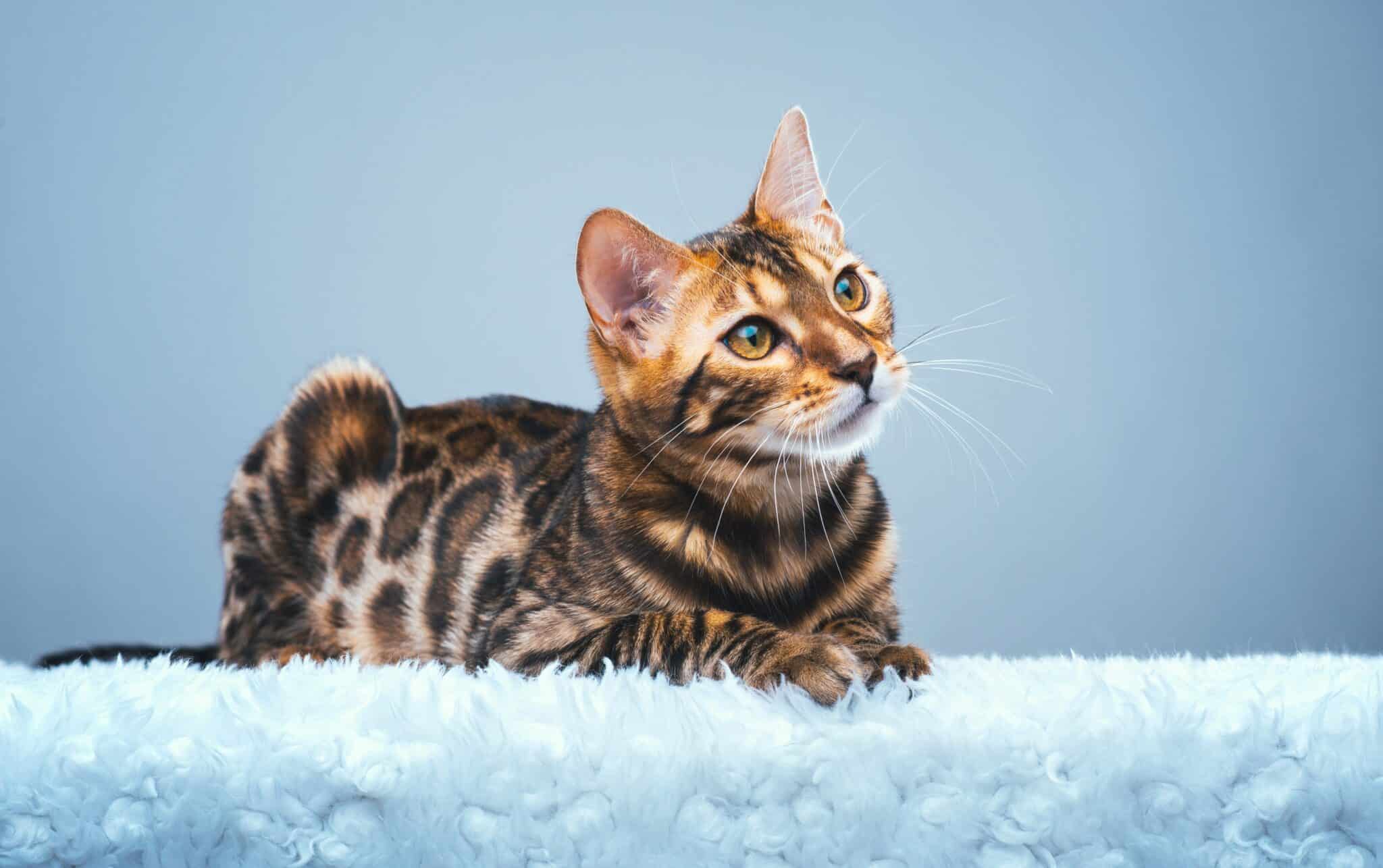
Bengals have a pelt instead of fur across their bodies. The difference is quite significant because they have a thin coat, and the pelt can even be considered part of the animal’s skin instead of the fur that covers the skin.
Their typical appearance is striking, and Bengals should always have spotting across their body and up their neck. Often, their legs will have strips of darker fur instead of spots, but not always. The patterns for their coats can include:
- Rosetted
- Marble
- Sparbled
- Spotted
All of these look similar to spotting, but the primary difference is the shape and layout of the spots. For example, a Rosette pattern is the most desirable coat in a Bengal. The rosettes are spots all over their body, but each spot contains two different colors.
What’s more, beyond their coat pattern, particular Bengal cats can inherit a glittery gene. Their coat takes on a special sheen that is more obvious in photographs. As they move through different lighting, their coats catch it and glitter. They seem to have a spotlight on them.
2. Check Their Coloring
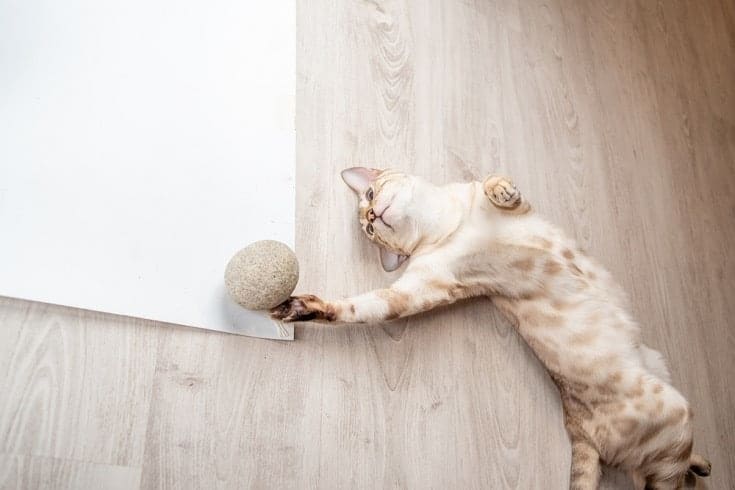
Now, you need to take stock of their coloring. There is a small variation in the color types that Bengal cats can have, with the most common being the brown and tan variety. They will be primarily covered in a tan and gold color, and their spots and stripes will take on deeper shades of brown.
The other colors that are currently recognized by The International Cat Association (TICA) include:
- Snow Bengals
- Silver Bengals
Although they are not common, they are highly sought after and more expensive. The Snow Bengal is the rarest of the cats, and their base color is stark white with spots on their bodies that can range in color from light brown to chocolate. They often have incredible eyes that are a stunning blue or green.
The Silver Bengal has a gene that completely inhibits them from having dark colors appearing as a base color. Their base color can range from white to a steel shade. Since their markings are always dark, the contrast is dramatic and beautiful.
Several colors have not been recognized by the cat associations. These include:
- Blue Bengals
- Black Bengals
- Charcoal Bengals
These are typically quite rare and are not recognized officially as part of the Bengal breed.
3. Look at Their Build
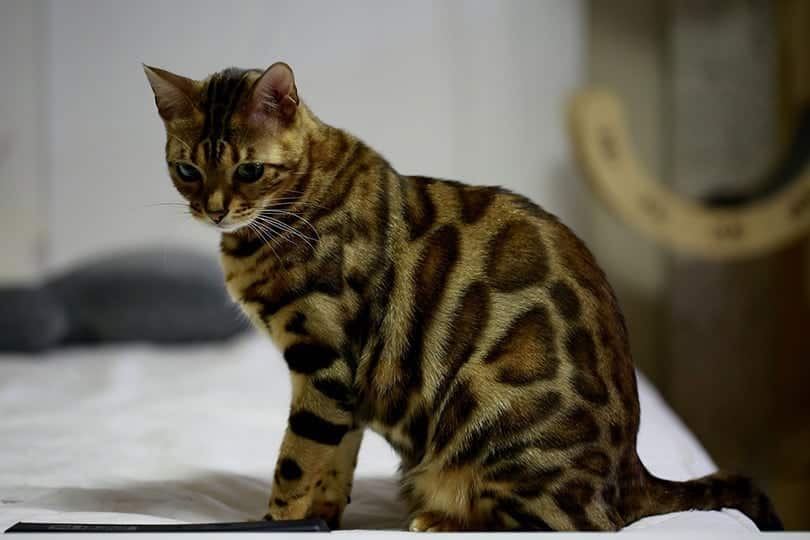
A Bengal has a lean and athletic build, and they’re one of the slimmest breeds. Bengals are smaller cats that sometimes seem larger because their weight of 8 to 15 pounds goes into their length and height more than chunkiness. They have a strong body and a somewhat stocky build. Combined with their energetic personality, even the way they carry themselves sets them apart.
Their overall build also depends on which domestic cat is used for breeding them. If they are bred with the Egyptian Mau, they will be especially lean, with thin bodies and angular faces. Breeding them with a British Shorthair will produce bigger Bengals, but their energy still keeps them slim.
4. Identify the Bengal’s Temperament
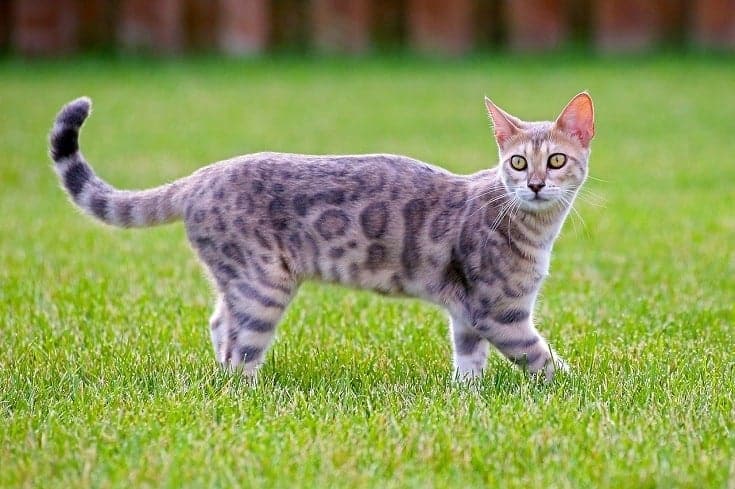
The Bengal cat has characteristics typical of their appearance and stand-out personalities. They always have a great deal of energy and need plenty of playtime and attention. Their close ancestors got to wander the forests and hunt for their food. This need for activity carries on to their close progeny.
In other words, don’t get a Bengal cat if you are looking for a cuddly lovebug that will want to sit in the sun for hours or spend their evenings watching TV with you. They will almost always want to be up and active, ready for the next most interesting thing to come their way rather than sleeping through it. When they finally get all their energy out, they can be cuddly; you just have to wait.
5. Figure Out if They Are Social (and Like Dogs)
Most cats are known to be independent creatures, but Bengals are not like most. They love to socialize and are never shy. They’re not only friendly and expressive with other cats and humans, but they also get along with dogs. Some owners have found that a Bengal will identify with and play with their dogs more than other cats that live in the house.
6. Do the Dunk Test
Most cats hate water, but Bengals love water and enjoy splashing around in it, getting their feet wet, and taking deep pleasure in bath time. Their thin coat makes it easier for them to dry off, and they won’t feel as heavy when they get soaked. Some Bengals can even figure out how to turn on the bathroom faucet!
7. Figure out How High Can they Go (re: Jumping and Heights)
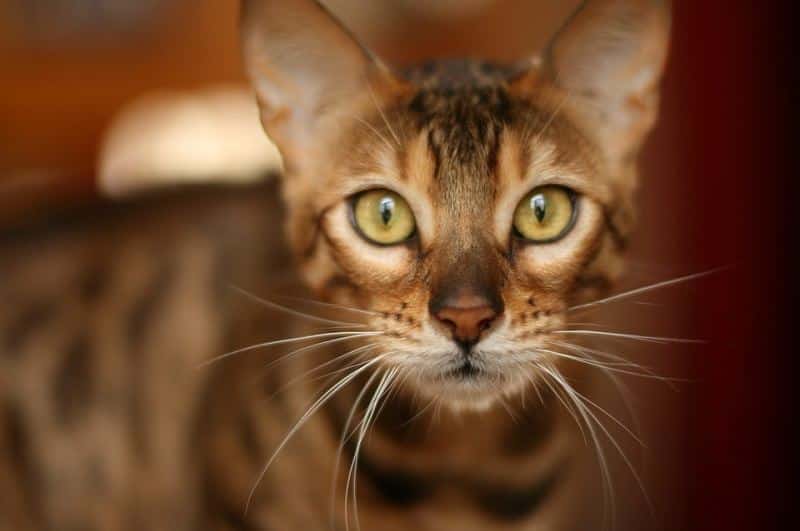
Bengals are practically spring-loaded and always looking for their next jump. They are known for being excellent jumpers and can leap up to three times their height. They will use just about anything as an excuse to jump. They will jump from one couch to another or onto the countertop, even if they could have walked over.
Since they love to jump on things and climb, you will notice that Bengals are relatively fearless. Some cats are afraid of heights and freeze once they realize how high they are. A Bengal loves relaxing on high branches or narrow windowsills and has no problem getting down on their own time.
8. Listen for Chatter
Along with your cat’s love for socializing, playtime, and companionship is their tendency to vocalize their emotions. Listen to your cat and how they use their voices to communicate. A quiet cat is unlikely to be a Bengal. A mixed Bengal cat will use a wide range of sounds to communicate.
For example, when they meow, it often means they want attention. If they get angry or scared, they often will hiss, and if a situation is dire or they are genuinely annoyed, they will yowl.
9. Consult an expert
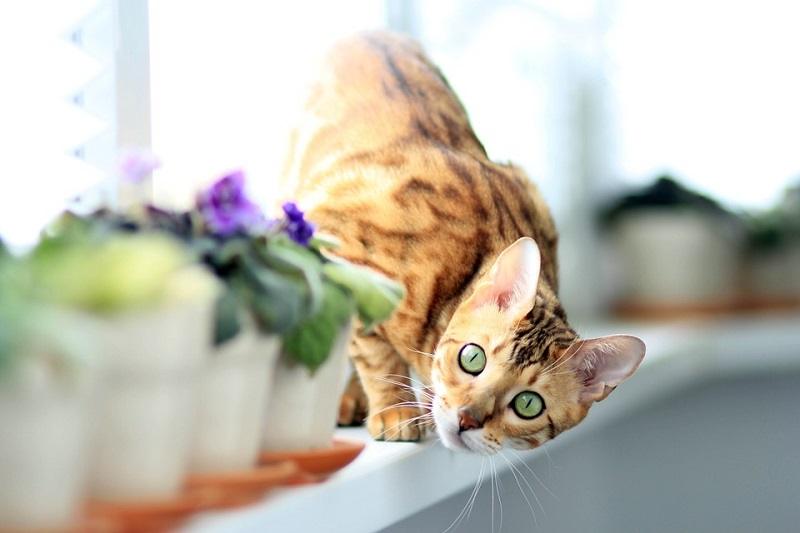
If all else fails, you can ask an expert about your cat’s genetics and whether they think they’re a Bengal. There are also DNA tests for sale that can tell you your pet’s breed after you send in a saliva sample.
 Talk to a breeder about a Bengal mix
Talk to a breeder about a Bengal mix
Start by talking to a Bengal cat breeder if you have access to one. Perhaps you adopted your cat from a breeder and want to know exactly what domestic animal was used in the hybrid.
Getting a second opinion from another breeder is also helpful in figuring out your cat’s mix. Another breeder won’t need to lie about selling a cat that wasn’t a Bengal.
Breeders of individual breeds spend a great deal of time with the cats and get to know their characteristics very well. They know where to look and how to observe the cat to determine their breed.
Ask your vet about mixed Bengal cat testing
If you want to get testing done to prove your mixed Bengal cat and their genetics with more certainty, you can talk to your veterinarian. They might be able to tell you without doing any extra tests if you have a tabby Bengal mix, but if you want to know beyond a doubt, they can take blood tests to look at your cat’s DNA.

Reach out to a Bengal breed organization
If you don’t have ready access to a Bengal breeder or want to take your cat in for an extra vet appointment, consider looking into a Bengal breed organization. Bengals have developed quite a following throughout the world, especially in Europe and North America. There are many groups on Facebook and other platforms created for Bengal owners or questions about the breed.
Some of these groups will not answer individual queries, but you might be able to glean additional information to help you finalize the identification of your Bengal.
See also:
- Ocicat vs Bengal: What’s the Difference? (With Pictures)
- Bengal Cat vs Maine Coon: Main Difference (With Pictures)
Featured Image Credit: Alexander_Evgenyevich, Shutterstock
Contents
- What Are Bengal Cats?
- How to Tell if Your Bengal Cat is a Mix (9 Signs)
- 1. Examine Their Coat
- 2. Check Their Coloring
- 3. Look at Their Build
- 4. Identify the Bengal’s Temperament
- 5. Figure Out if They Are Social (and Like Dogs)
- 6. Do the Dunk Test
- 7. Figure out How High Can they Go (re: Jumping and Heights)
- 8. Listen for Chatter
- 9. Consult an expert
- Talk to a breeder about a Bengal mix
- Ask your vet about mixed Bengal cat testing
- Reach out to a Bengal breed organization

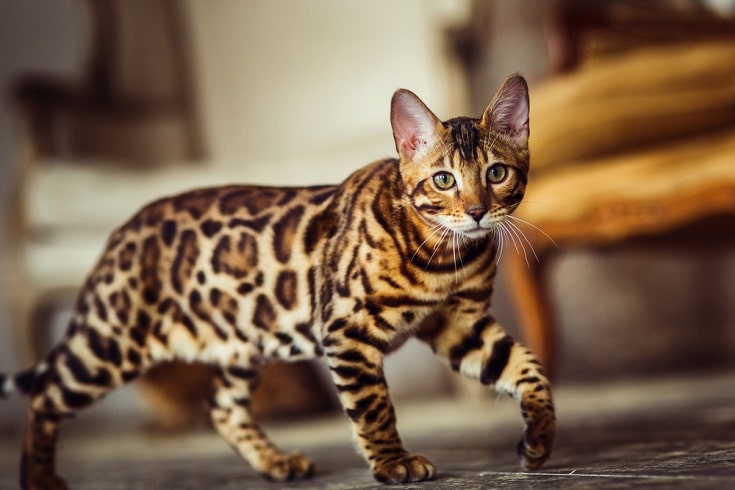

 Talk to a breeder about a Bengal mix
Talk to a breeder about a Bengal mix






